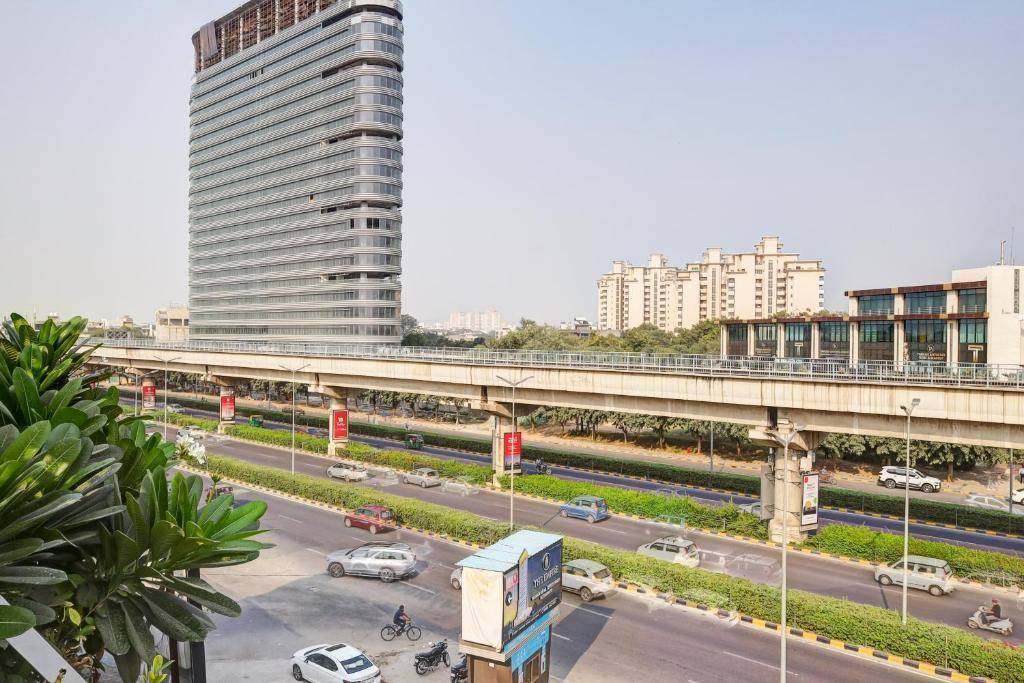India's office space market experienced unprecedented growth in the first half of 2024, setting new records in transaction volumes across the top eight cities. According to a report by Knight Frank India, the market recorded transactions totaling 34.7 million square feet (mn sq ft) in H1 2024, marking a 33% year-on-year (YoY) increase from 26.1 mn sq ft in H1 2023. This surge is anticipated to continue, with projections indicating that office space absorption could exceed 70 mn sq ft by the year's end, driven primarily by renewed demand from IT and ITeS companies.
Dominant Market Performance
Bengaluru: As the largest office market, Bengaluru accounted for 8.4 million sq ft, or 26% of total office transactions in H1 2024, reflecting a 21% increase in demand. The city's position as a tech hub, coupled with robust infrastructure, makes it an attractive destination for businesses.
Mumbai: Following Bengaluru, Mumbai saw 5.8 million sq ft of office space transactions, driven by its status as the financial capital of India and presence of MNC's in the city.
Hyderabad: Notably, Hyderabad experienced a remarkable 71% increase in office space demand, reaching 5 million sq ft. The city's growing reputation as a center for technology and biotech industries contributes to its rising prominence in the office market.
Delhi-NCR: Office space demand increased by 11.5%, totaling 5.7 million sq ft. This region's demand is driven by a mix of industries, including IT, consulting, and service sectors.
Pune: Pune experienced an 88% rise in leasing, reaching 4.4 million sq ft. The city's growing tech and educational sectors contribute to its strong office market performance.
Kolkata: Recorded a 23% increase in office space demand, The demand is supported by its emerging IT sector, e-commerce and startup ecosystems.
Ahmedabad: Registered a staggering 218% increase in office space transactions, due to its status as an industrial and business hub.
Chennai: The only market to see a decline, with a 33% drop to 3 million sq ft due to a shortage of grade A space. However, Chennai remains an important market with potential for future growth.
Market Dynamics
Vacancy and Rental Trends
The completion of 25.1 mn sq ft of office space in H1 2024 helped reduce vacancy rates to 15.6%. This robust demand also led to an increase in rental values across all major markets. Chennai led the way with a 9% YoY increase, followed by Bengaluru with a 7% rise. The rising rental values reflect the competitive nature of the market and the willingness of companies to invest in quality office spaces.
India-Facing Businesses and GCCs
India-facing businesses, which lease office space for operations focused on the domestic market, dominated the market, accounting for 14.3 mn sq ft or 41% of total leasing volume. This is an increase from 35% in H1 2023, reflecting strong confidence in the Indian economy. These businesses span a range of sectors including finance, consulting, and retail, all capitalizing on India's robust economic growth.
Global Capability Centers (GCCs) also played a significant role, absorbing 9.8 mn sq ft, up from 6.6 mn sq ft in H1 2023. Bengaluru and Hyderabad were the primary beneficiaries, with GCC-focused transactions of 4 mn sq ft and 3 mn sq ft, respectively. GCCs are increasingly important as multinational companies expand their operations in India to leverage cost advantages and access to skilled talent.
The Rise of Flex Spaces
After a dip in the second half of 2023, the flex space market rebounded strongly in H1 2024. Flex spaces accounted for 21% of total transactions, with co-working spaces making up 72% of this segment. This resurgence is attributed to the growing preference for flexible work arrangements that enhance employee productivity. The rise of hybrid working models post-pandemic has fueled demand for flexible office spaces that can accommodate varying team sizes and changing business needs.
Future Outlook
The office space market in India is on a trajectory of significant growth, with Knight Frank India's report indicating potential for more than 70 mn sq ft of office space absorption by the end of 2024. This growth is driven by the resurgence of the IT and ITeS sectors, increasing demand from India-facing businesses, and a robust performance by GCCs. With rental values rising and vacancy rates falling, the office space market is set to remain buoyant, reflecting strong economic confidence and continued investment in India's commercial real estate sector.
Conclusion
India's office space market is undergoing a transformative phase, characterized by record-breaking transaction volumes and strong demand across major cities. The resurgence of the IT sector, coupled with the increasing role of GCCs and the flexibility offered by co-working spaces, are key drivers of this growth. As the market continues to evolve, it presents significant opportunities for investors, developers, and businesses looking to expand their footprint in one of the world's most dynamic economies. With a projected absorption of over 70 mn sq ft by year-end, the Indian office market is poised for a robust performance, underpinned by strong economic fundamentals and a resilient demand for commercial real estate.
Image source- pixabay.com









.png)